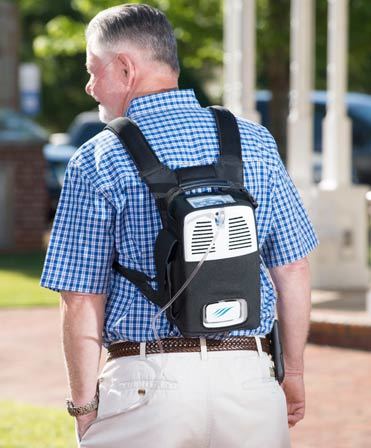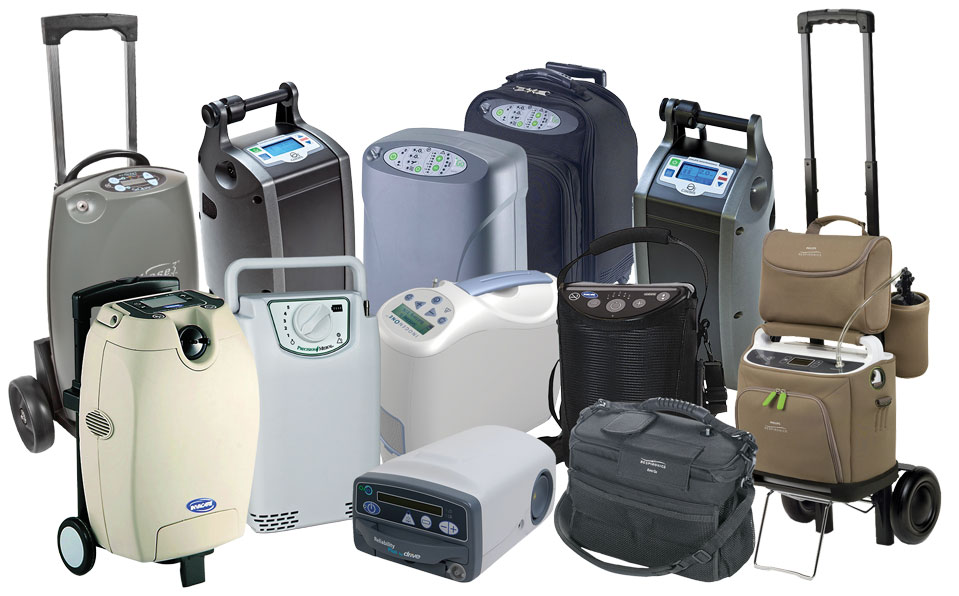Some Ideas on Portable Oxygen Concentrators You Should Know
Table of ContentsGetting The Portable Oxygen Concentrators To WorkSome Ideas on Portable Oxygen Concentrators You Need To KnowExamine This Report about Portable Oxygen ConcentratorsSome Known Facts About Portable Oxygen Concentrators.
Stationary oxygen concentrators were once the standard, yet these tanks could consider 50 pounds and were really troublesome (Portable Oxygen Concentrators). Currently, portable oxygen concentrators finish the job, and they can match a purse or purse! The only thing you should bear in mind is that mobile concentrators have a lot more restricted oxygen shipment capacitiesThere are 2 main kinds of portable oxygen concentrators: pulse dosage and continuous flow. As the name suggests, pulse dose concentrators provide oxygen intermittently, just activating when you inhale. This type of gadget is usually recommended for COPD individuals with restricted oxygen requirements, as the amount of O2 that a pulse dose concentrator can supply is relatively low.
This gadget can provide up to 3,000 m, L of oxygen every minute, while pulse dose devices tend to top out at 1250 m, L. Continuous circulation devices are the go-to for the majority of COPD people, as they're suitable for people who require 2 to 5 litres of oxygen a min.
Since you have this guide to the different types of portable oxygen equipments, pick the most effective device with the assistance of your physician. You can discover our blog sites for more information about the types of mobile oxygen offered and our various other items, like tubing and cannulas. Or you can call us straight with any kind of certain concerns you may have.
The Best Guide To Portable Oxygen Concentrators
We are mindful Americans utilize domestic variations in home care scenarios. We wondered just how well these portable oxygen concentrators would function in hospitals. POC concentrators boost the proportion of oxygen in ambient air individuals breathe in, whenever they require a boost. Private-use ones are small sufficient to carry around, and may aid stay clear of the need to see overloaded centers and health centers.
When it comes to mobile oxygen therapy, there are 2 major alternatives for shipment. These are portable oxygen cyndrical tubes which contain compressed oxygen gas, or oxygen concentrators, which make use of a battery powered system to press and filter air, in order to create a constant supply of concentrated oxygen. In this message, AMS Composite Cylinders Technical Director, Tony Morrin, compares the two, looking at the advantages and disadvantages of each oxygen distribution system for NHS medical oxygen users in terms of client freedom.

Mobile Oxygen Concentrator Oxygen purity is continually higher when supplied from cyndrical tubes it never ever goes down below 99. Whilst oxygen concentrators can be helpful for clients that call for a reduced flow of oxygen, cylinders provide higher focus that can be extra ideal for individuals with high circulation demands.
Rumored Buzz on Portable Oxygen Concentrators
Both systems need the patient to lug about devices. For cyndrical tubes, this will consist of lugging a bag (and periodically a cart) and for portable oxygen concentrators this will include the bag, cart and power battery charger. Weight smart, mobile oxygen concentrators can be comparable in weight, or often, lighter than traditional aluminium cylinder systems.
They will have to boost dramatically if they are to supply the exact same degree of efficiency as similar composite cylinders. Oxygen always lugs a great post to read security risk. On one hand, must cyndrical tubes spring a leakage, they can develop an oxygen rich setting that could cause a rise in fire risk.

The distinction is that there are considerable in advance expenses to acquiring a mobile oxygen concentrator, however reduced running prices using cylinders allows the purchaser to spread out the cost over an extensive period of time. One small disadvantage of a mobile oxygen concentrator is the noise mobile systems make a considerable amount of sound throughout operation, which numerous patients find distracting.
A Biased View of Portable Oxygen Concentrators

Our high-quality carbon composite cyndrical tubes supply high stress (300 Bar), low weight, and NLL (Non-Limited Life) efficiency, and are recognized for use worldwide. Further info regarding AMS Compound Cylinders Ltd can be discovered at .
Oxygen concentrators are made with individual wheelchair in mind. Whether i was reading this it's a desktop version for home usage or a smaller, light-weight model for on-the-go, these tools enable clients to relocate easily without being tethered to a stationary device. Specifically for the ones specifically designed for portability, individuals can bring them around, helping with traveling and everyday activities effortlessly.
One of the significant conveniences of making helpful resources use of an oxygen concentrator is the removal of the constant demand to re-fill oxygen storage tanks. This not just minimizes the logistical obstacles and recurrent prices related to refills yet likewise makes certain that the customer has a more predictable and stable resource of oxygen. Oxygen concentrators are created to fit seamlessly into the home setting.